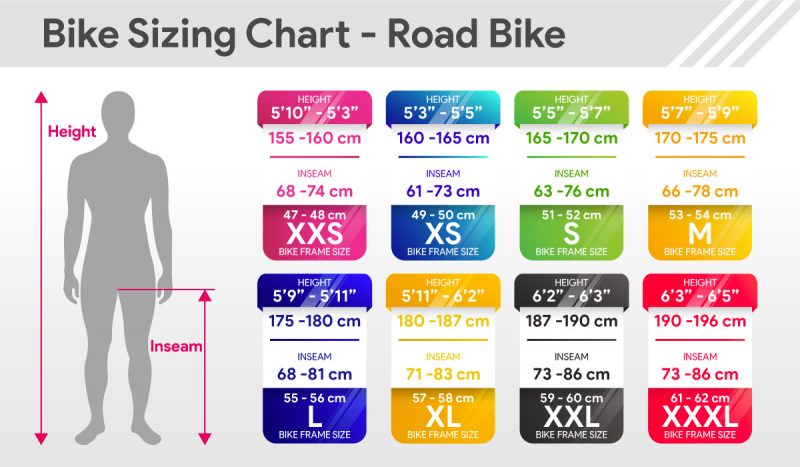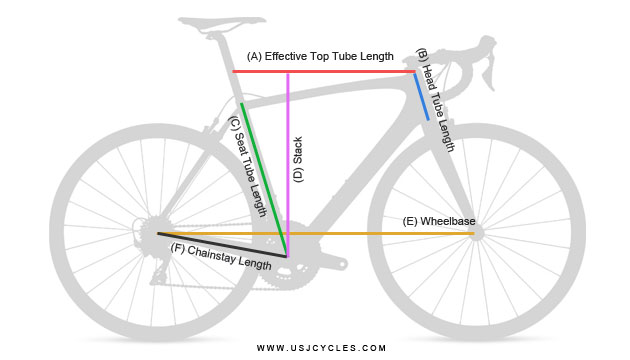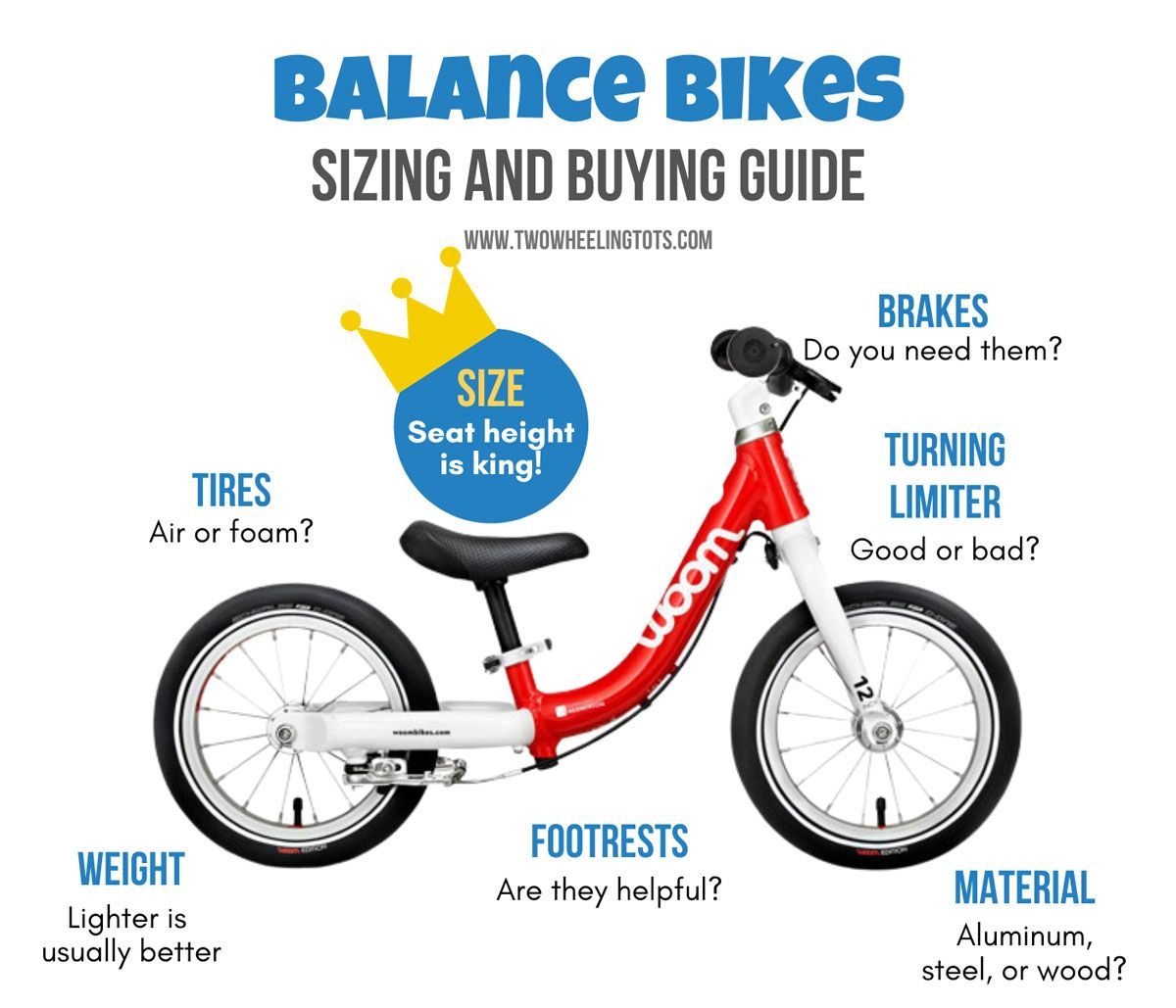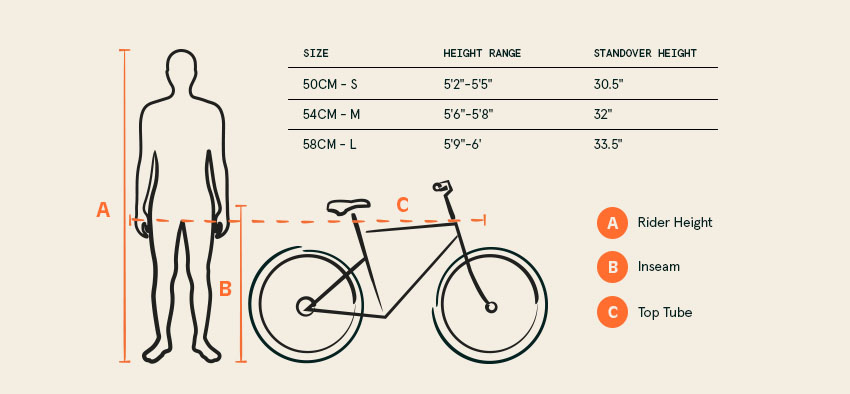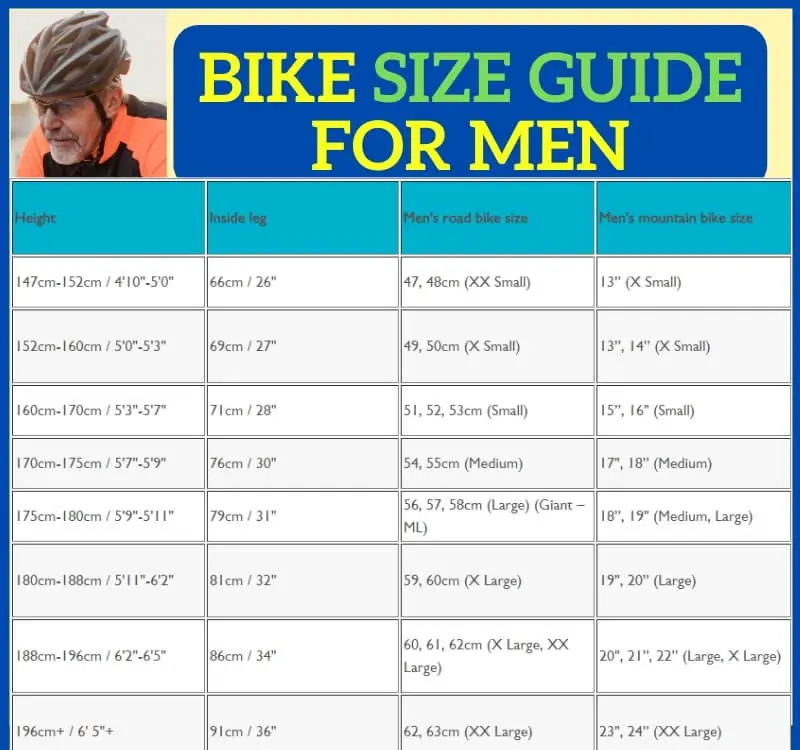Why Proper Bike Sizing Matters for a Comfortable Ride
A well-fitting road bike is essential for a comfortable and efficient ride. When a bike is properly sized, it can improve performance, reduce discomfort, and prevent injuries. A road bike that is too small or too large can lead to a range of issues, including back and neck pain, numbness in the hands and feet, and decreased pedaling efficiency.
Proper bike sizing is particularly important for road cyclists, who often spend long hours in the saddle. A bike that fits correctly can help to reduce fatigue and improve overall comfort, allowing riders to focus on their performance and enjoy the ride. In contrast, a poorly fitting bike can lead to a range of problems, including decreased power output, reduced endurance, and increased risk of injury.
According to a road bike sizing guide, a bike that is too small can cause riders to hunch over, leading to strain on the back and neck. On the other hand, a bike that is too large can cause riders to stretch, leading to discomfort and decreased control. By finding a bike that fits correctly, riders can avoid these issues and enjoy a more comfortable and efficient ride.
In addition to comfort and performance, proper bike sizing is also important for safety. A bike that fits correctly can help riders to maintain control and avoid accidents, particularly in situations where quick reactions are required. By investing in a road bike that is properly sized, riders can enjoy a safer and more enjoyable riding experience.
Overall, proper bike sizing is essential for road cyclists who want to enjoy a comfortable, efficient, and safe ride. By following a road bike sizing guide and finding a bike that fits correctly, riders can improve their performance, reduce discomfort, and prevent injuries. Whether you’re a seasoned pro or just starting out, a well-fitting road bike is the key to unlocking your full potential and enjoying the ride.
How to Determine Your Road Bike Size: A Step-by-Step Guide
Determining your road bike size can seem like a daunting task, but with a few simple measurements and some guidance, you can find the perfect fit. To start, you’ll need to take three key measurements: your height, inseam, and arm length. These measurements will help you determine your ideal road bike size and ensure a comfortable riding position.
First, measure your height in inches or centimeters. This will give you a general idea of your road bike size range. Next, measure your inseam by placing a book or similar object between your legs and measuring the distance from the top of the book to the floor. This will help you determine your ideal seat height and ensure proper leg extension.
Finally, measure your arm length from the center of your back to your wrist. This will help you determine your ideal handlebar height and ensure a comfortable riding position. Once you have these measurements, you can use an online road bike sizing guide to determine your ideal road bike size.
Online bike size charts can be a useful tool in determining your road bike size, but it’s essential to keep in mind that these charts are only a guide. The best way to ensure a perfect fit is to consult with a professional bike fitter. A professional bike fitter can take into account your unique body measurements, riding style, and preferences to recommend the perfect road bike size.
When consulting with a professional bike fitter, be sure to provide them with your measurements and any relevant information about your riding style and preferences. They will use this information to recommend a road bike size that is tailored to your specific needs. By taking the time to get a professional bike fit, you can ensure a comfortable and efficient riding position, and get the most out of your road bike.
In addition to consulting with a professional bike fitter, you can also use online resources to help determine your road bike size. Many bike manufacturers provide sizing guides and charts on their websites, which can be a useful tool in determining your ideal road bike size. However, it’s essential to keep in mind that these guides are only a starting point, and the best way to ensure a perfect fit is to consult with a professional bike fitter.
Understanding Road Bike Geometry: What You Need to Know
Road bike geometry refers to the design and layout of a road bike’s frame and components. Understanding road bike geometry is essential for finding a bike that fits comfortably and handles well. In this section, we’ll explore the key components of road bike geometry and how they affect the fit and handling of the bike.
One of the most important components of road bike geometry is the top tube length. The top tube is the horizontal tube that runs from the head tube to the seat tube. The length of the top tube determines the bike’s overall fit and comfort. A longer top tube can provide a more comfortable riding position, but may also make the bike more difficult to handle.
Another key component of road bike geometry is the seat tube angle. The seat tube angle refers to the angle between the seat tube and the ground. A steeper seat tube angle can provide a more aggressive riding position, but may also put more pressure on the rider’s hands and wrists.
The head tube angle is also an important component of road bike geometry. The head tube angle refers to the angle between the head tube and the ground. A steeper head tube angle can provide a more responsive and agile bike, but may also make the bike more difficult to handle at high speeds.
In addition to these components, road bike geometry also includes other factors such as wheelbase, chainstay length, and fork rake. Understanding how these components interact and affect the bike’s fit and handling is essential for finding a bike that meets your needs and preferences.
A road bike sizing guide can provide valuable information on how to choose a bike that fits comfortably and handles well. By considering factors such as top tube length, seat tube angle, and head tube angle, you can find a bike that meets your needs and provides a comfortable and efficient riding experience.
It’s also important to note that road bike geometry can vary depending on the type of bike and the intended use. For example, a bike designed for racing may have a more aggressive geometry than a bike designed for endurance riding. By understanding the different types of road bike geometry and how they affect the bike’s fit and handling, you can make an informed decision when choosing a bike.
Top Tube Length: The Key to a Comfortable Riding Position
Top tube length is a critical component of road bike geometry, and it plays a significant role in determining a comfortable riding position. The top tube is the horizontal tube that runs from the head tube to the seat tube, and its length can affect the bike’s fit and handling.
A longer top tube can provide a more comfortable riding position, as it allows the rider to stretch out and maintain a more aerodynamic position. However, a top tube that is too long can make the bike more difficult to handle, particularly for smaller riders. On the other hand, a shorter top tube can make the bike more agile and responsive, but may also cause the rider to feel cramped and uncomfortable.
To determine the ideal top tube length for your road bike, you’ll need to consider your body measurements and riding style. A general rule of thumb is to look for a top tube length that is proportional to your arm length. For example, if you have longer arms, you may prefer a longer top tube to maintain a comfortable riding position.
When measuring the top tube length, it’s essential to consider the bike’s overall geometry and how it will affect the fit and handling. A road bike sizing guide can provide valuable information on how to choose a bike with the right top tube length for your body and riding style.
In addition to considering the top tube length, it’s also essential to think about the bike’s overall fit and comfort. A bike that is too small or too large can cause discomfort and affect the rider’s performance. By finding a bike with the right top tube length and overall fit, you can enjoy a more comfortable and efficient riding experience.
Some popular road bikes, such as the Trek Domane or the Specialized Tarmac, offer a range of top tube lengths to accommodate different body types and riding styles. By researching these bikes and consulting with a professional bike fitter, you can find a bike that meets your needs and provides a comfortable and efficient riding experience.
Seat Height and Handlebar Reach: Finding the Perfect Balance
Seat height and handlebar reach are two critical components of a comfortable and efficient riding position. When these components are properly adjusted, they can help to reduce discomfort, improve performance, and prevent injuries.
Seat height is the distance between the saddle and the pedals. A seat height that is too low can cause the rider to feel cramped and uncomfortable, while a seat height that is too high can cause the rider to feel stretched out and unstable. To find the perfect seat height, riders should aim to have a slight bend in the knee when the pedal is in its lowest position.
Handlebar reach is the distance between the saddle and the handlebars. A handlebar reach that is too short can cause the rider to feel cramped and uncomfortable, while a handlebar reach that is too long can cause the rider to feel stretched out and unstable. To find the perfect handlebar reach, riders should aim to have a comfortable distance between the saddle and the handlebars, with a slight bend in the elbow.
When adjusting the seat height and handlebar reach, it’s essential to consider the rider’s body measurements and riding style. A road bike sizing guide can provide valuable information on how to choose a bike with the right seat height and handlebar reach for your body and riding style.
In addition to adjusting the seat height and handlebar reach, riders should also consider the bike’s overall fit and comfort. A bike that is too small or too large can cause discomfort and affect the rider’s performance. By finding a bike with the right seat height, handlebar reach, and overall fit, riders can enjoy a more comfortable and efficient riding experience.
Some popular road bikes, such as the Trek Domane or the Specialized Tarmac, offer adjustable seat height and handlebar reach to accommodate different body types and riding styles. By researching these bikes and consulting with a professional bike fitter, riders can find a bike that meets their needs and provides a comfortable and efficient riding experience.
Ultimately, finding the perfect balance between seat height and handlebar reach is crucial for a comfortable and efficient riding position. By considering the rider’s body measurements and riding style, and adjusting the seat height and handlebar reach accordingly, riders can enjoy a more comfortable and efficient riding experience.
Real-World Examples: How to Choose the Right Road Bike Size
Choosing the right road bike size can be a daunting task, especially for those new to cycling. To help illustrate the process, let’s take a look at some real-world examples of popular road bikes and how to choose the right size based on your body measurements and riding style.
For example, the Trek Domane is a popular road bike that comes in a range of sizes to fit different body types and riding styles. To choose the right size, you’ll need to consider your height, inseam, and arm length. According to Trek’s road bike sizing guide, a rider with a height of 5’9″ and an inseam of 32″ would fit best on a size 56cm Domane.
Another popular road bike is the Specialized Tarmac, which also comes in a range of sizes to fit different body types and riding styles. To choose the right size, you’ll need to consider your height, inseam, and arm length. According to Specialized’s road bike sizing guide, a rider with a height of 5’11” and an inseam of 34″ would fit best on a size 58cm Tarmac.
When choosing a road bike size, it’s essential to consider your riding style and preferences. For example, if you’re a more aggressive rider, you may prefer a smaller size to provide a more responsive and agile ride. On the other hand, if you’re a more endurance-oriented rider, you may prefer a larger size to provide a more comfortable and stable ride.
In addition to considering your body measurements and riding style, it’s also essential to test ride a bike before purchasing it. This will give you a chance to see how the bike feels and handles, and to make any necessary adjustments to the fit.
By considering your body measurements, riding style, and preferences, and by test riding a bike before purchasing it, you can find the perfect road bike size to meet your needs and provide a comfortable and efficient riding experience.
Remember, a road bike sizing guide is just a starting point, and the best way to ensure a perfect fit is to consult with a professional bike fitter. They can help you find the perfect fit and provide personalized recommendations to ensure a comfortable and efficient riding experience.
Common Mistakes to Avoid When Sizing a Road Bike
When it comes to sizing a road bike, there are several common mistakes to avoid. By being aware of these mistakes, you can ensure a comfortable and efficient riding experience.
One of the most common mistakes is relying too heavily on online size charts. While online size charts can provide a general idea of the right size, they are not always accurate. Factors such as riding style, body type, and personal preference can affect the fit of the bike, and online size charts may not take these factors into account.
Another common mistake is neglecting to consider your riding style and preferences. For example, if you’re a more aggressive rider, you may prefer a smaller size to provide a more responsive and agile ride. On the other hand, if you’re a more endurance-oriented rider, you may prefer a larger size to provide a more comfortable and stable ride.
Not test riding a bike before purchasing it is also a common mistake. Test riding a bike allows you to see how the bike feels and handles, and to make any necessary adjustments to the fit. By not test riding a bike, you may end up with a bike that doesn’t fit properly, which can lead to discomfort and affect performance.
Additionally, not considering the bike’s geometry and components can also lead to a poor fit. For example, a bike with a longer top tube may require a different size than a bike with a shorter top tube. Similarly, a bike with a more aggressive geometry may require a different size than a bike with a more relaxed geometry.
Finally, not consulting with a professional bike fitter is also a common mistake. A professional bike fitter can help you find the perfect fit and provide personalized recommendations to ensure a comfortable and efficient riding experience.
By avoiding these common mistakes, you can ensure a comfortable and efficient riding experience. Remember, a road bike sizing guide is just a starting point, and the best way to ensure a perfect fit is to consult with a professional bike fitter and test ride a bike before purchasing it.
Getting a Professional Bike Fit: Is it Worth the Investment?
Getting a professional bike fit can be a valuable investment for any cyclist. A professional bike fitter can help you find the perfect fit and provide personalized recommendations to ensure a comfortable and efficient riding experience.
A professional bike fit typically involves a thorough analysis of your body measurements, riding style, and preferences. The bike fitter will use this information to adjust the bike’s components, such as the saddle height, handlebar reach, and cleat position, to ensure a perfect fit.
The benefits of a professional bike fit are numerous. For one, it can improve comfort and reduce discomfort and pain. A well-fitting bike can also improve efficiency and performance, allowing you to ride longer and faster with less effort.
In addition, a professional bike fit can help prevent injuries. A bike that is not properly fitted can put unnecessary strain on the body, leading to injuries such as back pain, neck pain, and knee pain. By getting a professional bike fit, you can reduce the risk of injury and ensure a safe and enjoyable riding experience.
Another benefit of a professional bike fit is that it can help you get the most out of your bike. A bike that is properly fitted can provide a more responsive and agile ride, allowing you to take full advantage of the bike’s capabilities.
So, is getting a professional bike fit worth the investment? Absolutely. While it may seem like an added expense, the benefits of a professional bike fit far outweigh the costs. By investing in a professional bike fit, you can ensure a comfortable, efficient, and safe riding experience, and get the most out of your bike.
When looking for a professional bike fitter, be sure to do your research. Look for a fitter who is certified and experienced, and who uses a thorough and personalized approach to bike fitting. By finding the right bike fitter, you can ensure a perfect fit and a riding experience that is tailored to your needs and preferences.


